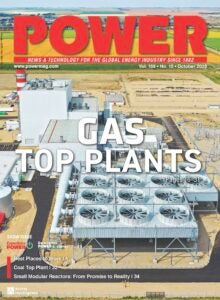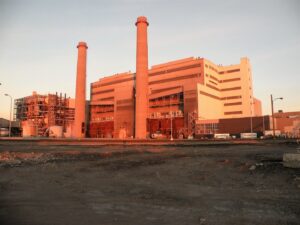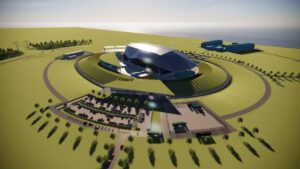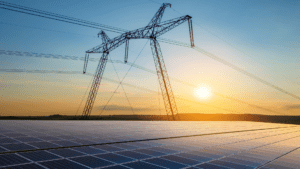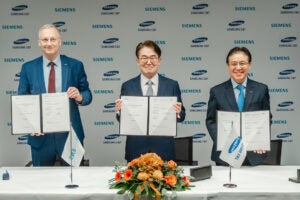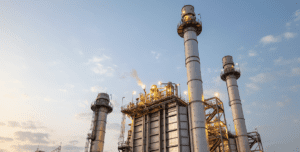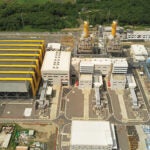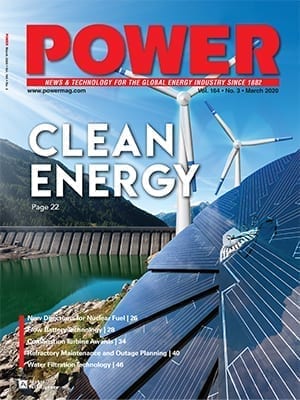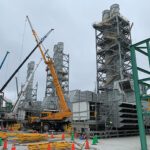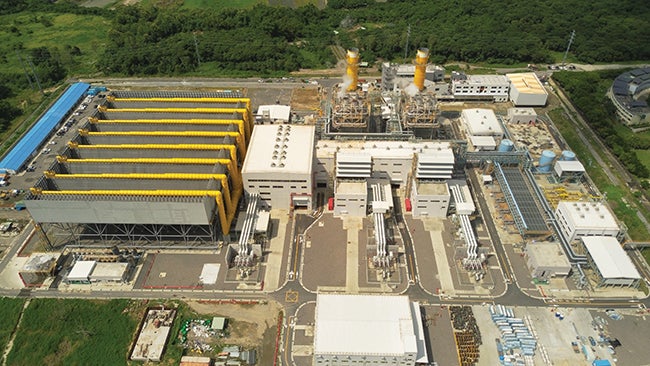 |
Taiwan’s energy transition faces a unique challenge: powering its world-leading semiconductor industry while phasing out nuclear power and reducing coal dependence. Part of the solution emerged from an unlikely location—a former pineapple field in Tainan—where engineers built what has been recognized as a POWER Top Plant award-winning facility critical to the island’s energy future.
On the afternoon of May 13, 2021, four generators tripped offline at the Hsinta Power Plant in Kaohsiung, setting off a cascade of events that would plunge Taiwan into crisis. Within minutes, the grid’s automatic safety systems kicked in, trading total system collapse for something almost as disruptive—rolling blackouts that cycled through neighborhoods across the island. For the next five hours, four million households, nearly one in six Taiwanese, found themselves sitting in darkness during 50-minute intervals, waiting for power to return. Even Taiwan’s semiconductor giant TSMC experienced power dips at its facilities, a reminder that the island’s tech industry—the backbone of its economy—was just as vulnerable as any household.
It wasn’t the first time millions of residents in Taiwan had been plunged into darkness. A major outage in 2017 had affected 6.68 million households and several smaller outages had occurred periodically over the years when power plants tripped for various reasons. Many of the outages followed a similar script—technical failures cascaded through an increasingly strained grid, automatic safety systems opted for rolling blackouts over total collapse, and millions of residents were left wondering when the next failure might come. By 2021, it was clear that Taiwan’s power infrastructure was operating on a knife’s edge.
Yet, the problem was poised to get worse. Then-President Tsai Ing-wen had campaigned in 2016 on promises to abolish nuclear power by 2025, and the nuclear phase-out was already underway—Kuosheng 1 would be shut down just two months later in July 2021. This created an urgent need to replace nuclear capacity with alternative sources.
Meanwhile, Taiwan also had plans to reduce its reliance on coal while phasing out nuclear power—a double transition that would make the energy challenge even more complex. To do so, the nation was turning to liquefied natural gas (LNG) and renewables to meet its growing power demand. Furthermore, Taiwan’s globally competitive semiconductor industry, including TSMC, is highly dependent upon stable and affordable electricity, so regular blackouts could be economically catastrophic and are simply unacceptable. Something had to be done.
A Reliable and Efficient Solution
It was against this backdrop of mounting energy pressures that a strategic partnership between Siemens Energy and CTCI Corp. (an engineering, procurement, and construction [EPC] company based in Taiwan) was formed. The two power industry giants created an open consortium and in October 2021 announced plans to construct the Sun Ba II project, a 1.1-GW combined cycle gas-fired power station in Tainan, southwestern Taiwan.
At the core of Sun Ba II are Siemens Energy’s advanced HL-class gas turbines, engineered to push the boundaries of performance and sustainability. With minimal domestic fossil fuel resources, Taiwan relies heavily on imports—especially LNG—to meet its energy needs. This dependency makes efficiency a critical factor in energy planning. By leveraging Siemens Energy’s high-efficiency turbine technology, Sun Ba II helps mitigate the financial burden of LNG imports while reducing carbon emissions, supporting both economic and environmental objectives.
Moreover, the plant’s flexible operation capabilities are vital for integrating intermittent renewable sources like solar and wind. As Taiwan ramps up its renewable portfolio, gas-fired plants like Sun Ba II will play a balancing role, ensuring grid stability and reliability. Meanwhile, a long-term service agreement and digital optimization options further reinforce the plant’s role as a future-proof asset in Taiwan’s evolving energy mix.
Project Details
Sun Ba II was designed as a multi-shaft combined cycle power plant, in which two gas turbines and one steam turbine each drive their own electrical generators. Notably, the project site had been used as a pineapple field prior to its selection and development.
Siemens Energy’s scope of supply included the plant’s power island, consisting of two SGT6-9000HL gas turbines (Figure 1), one SST-5000 steam turbine, three SGen6-2000P generators, two heat recovery steam generators (HRSGs), and an Omnivise T3000 control system. Siemens Energy was also responsible for the water/steam cycle equipment, air-cooled condenser, and commissioning of the plant. CTCI, meanwhile, was mainly responsible for civil works, construction, and remaining balance-of-plant equipment. The customer was the independent power producer (IPP) Sun Ba Power Corp.
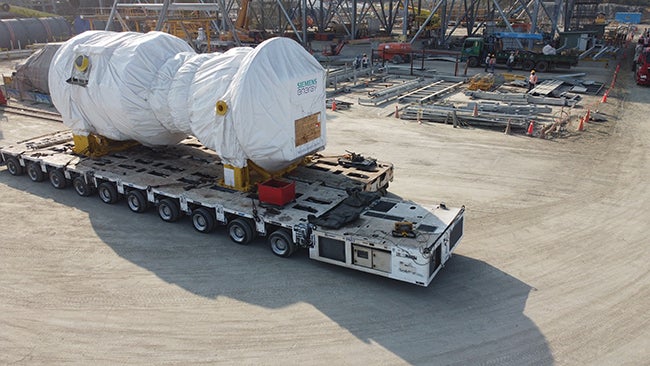 |
|
1. The SGT6-9000HL heavy-duty gas turbine boasts a combined cycle efficiency of greater than 64%. The two HL gas turbines and one associated steam turbine installed at the Sun Ba II facility can deliver about 1.1 GW of power to the grid. Courtesy: Siemens Energy |
The project was executed during the peak time of the COVID-19 pandemic. As such, lack of labor was one of the biggest challenges. “With solid planning and a high degree of pre-fabrication, we were able to overcome the labor limitations,” Thomas Ringmann, director of business development with Siemens Energy, told POWER. “Furthermore, CTCI Corp., as the biggest EPC company in Taiwan, was able to tap into its overall resource pool and distribute required labor accordingly. At peak time, more than 1,000 workers, counting all the trades and companies, were involved in this project.” In the end, the site team involved more than 30 different nationalities.
To ensure a safe working environment for the project, Siemens Energy and CTCI implemented the “Zero-Harm Principle” onsite. Several drills and training sessions were conducted, with everyone required to participate. “Safety Lesson Learn Workshops were conducted on a weekly basis to consistently improve safety and reflect a safety mindset onsite,” Project Manager Andy Chang said.
Overcoming Challenges
Extreme weather conditions, supply chain shortages, and logistical constraints were also challenges for the project. When a typhoon and flooding struck the region, the project team compensated for delays by extending work shifts and re-shuffling activities to catch up. When supply chain shortages impacted chip delivery for digital and electronics equipment, Siemens Energy adjusted processes and schedules to manage the restrictions and accelerated its business with suppliers through targeted higher prioritization. Logistical issues were managed using a forward-looking plan that provided sufficient float in the schedule. “We were able to secure transportation capacities early on,” Ringmann reported.
The inland transport from port to site, which covered a distance of more than 25 kilometers, was a massive challenge because it required crossing several bridges and coordination with local authorities and communities. “With proper pre-planning and intensive communication with all key stakeholders those difficulties were adequately managed,” Ringmann said.
| Learn More: Listen to The POWER Podcast Thomas Ringmann, director of Business Development with Siemens Energy; Ewen Chi, sales manager with Siemens Energy; and Andy Chang, project manager with Siemens Energy were guests on The POWER Podcast. The three gentlemen provided further details on the Sun Ba II project, including much more on project execution and the benefits the plant provides to Taiwan’s power grid. Listen to the full interview using the SoundCloud player below. |
World-Class Performance
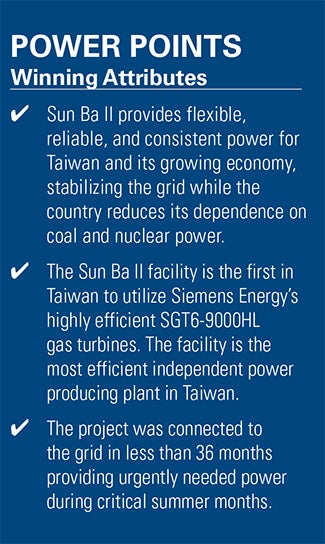 Sun Ba II’s gas turbines include dry-low-NOx (DLN) combustion systems. They also have selective catalytic reduction (SCR) systems installed downstream of the gas turbines in the HRSG area, further reducing NOx emissions to 3 parts per million (ppm). “The values achieved are way below the environmental requirement and benchmark in Taiwan,” Ringmann reported.
Sun Ba II’s gas turbines include dry-low-NOx (DLN) combustion systems. They also have selective catalytic reduction (SCR) systems installed downstream of the gas turbines in the HRSG area, further reducing NOx emissions to 3 parts per million (ppm). “The values achieved are way below the environmental requirement and benchmark in Taiwan,” Ringmann reported.
Siemens Energy incorporated its latest Omnivise T3000 system into the facility, which includes full digital service, remote monitoring, and performance optimization. The services are part of the plant’s 25-year long-term service package.
To benefit future deployments, Siemens Energy and CTCI conducted an intensive “lessons learnt review” after the project. The companies are already implementing those learning in their latest IPP project in Taiwan—the Kuo Kuang II power plant, which is being constructed in Taoyuan, northern Taiwan. “This project is a ‘copy-and-paste approach’ from the successful Sun Ba II with lessons learnt implemented,” Ringmann explained.
Sun Ba II was connected to the grid in less than 36 months, providing urgently needed power during critical summer months. Other similar projects in Taiwan have taken much longer. “The timeline was tough and additional challenges came up. Completion on time was only possible with all parties maintaining a collaborative spirit with only one priority: to bring power on grid, on time,” Chang said.
The Sun Ba II project was the first implementation of HL-technology in Taiwan. Nonetheless, the units quickly began supporting grid operations, even during commissioning and before planned completion. “This plant is being dispatched with higher capacity factor than initially expected,” Ringmann reported. “Therewith, it is one of the most important stable power sources for the grid.”
Today, Sun Ba II stands as more than just a power plant, it represents Taiwan’s path forward through one of the most complex energy transitions in the world. While government officials have reconsidered the decision to phase out nuclear power, an August 2025 referendum to restart Taiwan’s last nuclear power plant failed due to low voter turnout, leaving nuclear power off the table for now. With TSMC and other semiconductor giants depending on a stable power supply, and renewables still scaling up, efficient gas-fired plants have become the backbone that keeps Taiwan’s lights on and its economy humming. The success of Sun Ba II proves that when engineering excellence meets urgent national need, even the most challenging energy transitions become achievable.
“This project is not only about improving current-generation efficiency,” said Hsu Sheng-Feng, chairman of Sun Ba Power Corp., “it’s about laying the foundation for an adaptable and future-ready energy system that supports a more sustainable energy future. Sun Ba Power will continue to play a role in supporting Taiwan through peak electricity challenges and contributing to the broader goals of energy transition and sustainable development.”
—Aaron Larson is POWER’s executive editor.


